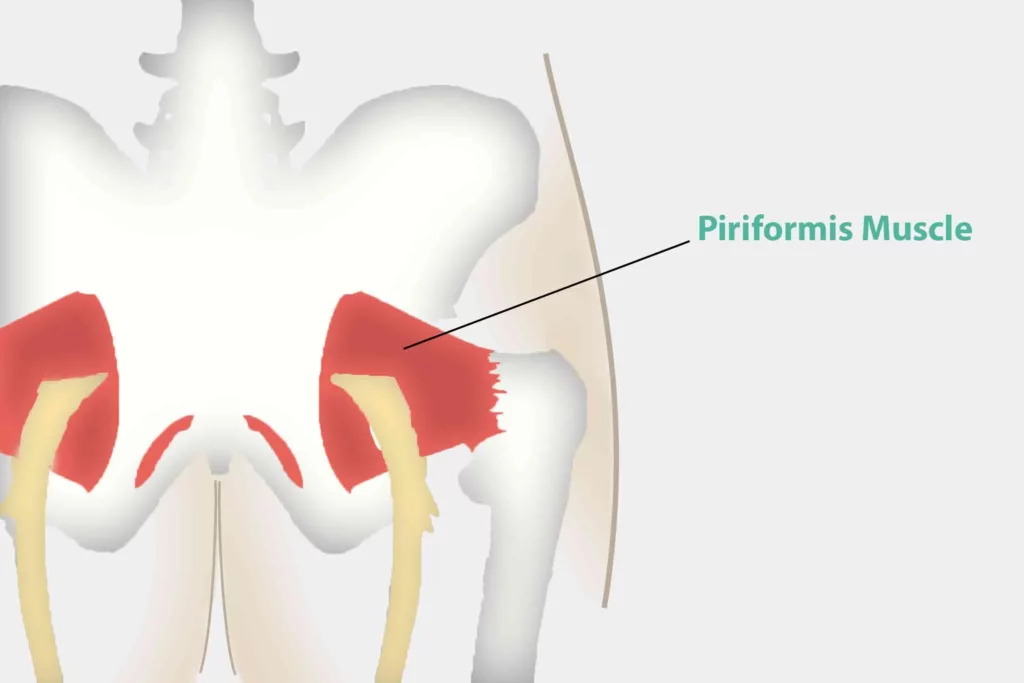What is Piriformis Syndrome?
Piriformis syndrome involves the piriformis muscle. It is located deep within the buttock region, behind the gluteus maximus. This muscles works to rotate the hip and turn your legs and feet outwards. It also helps to stabilise the hip which helps with actions like walking and staying balanced. The sciatic nerve runs directly beneath this muscle, or in some people it even runs through it. This muscle can spasm and cause pain in the buttock, and also cause irritation to the sciatic nerve. This causes numbness, tingling, and pain to run down the back of the leg and into the foot. This can also cause pain when walking up stairs or any incline, and after prolonged time spent seated. It can also reduce the range of motion of the hip joint. Motion of the hip usually aggravates the pain so things like walking and running can caused increased pain in the buttock and down the leg.
What is the cause?
Piriformis syndrome is often caused by a sports injury to the buttock region, which causes inflammation in the muscle. This injury could be a blunt trauma to the buttock, overuse, or a sprain. This can cause the muscle to become inflamed or to spasm, which then irritates the sciatic nerve. A sports injury doesn’t have to cause piriformis syndrome. It is also common in people who do a lot of driving for a job, such as a bus or truck driver. This is because hip is constantly rotated while your foot is on the pedals, and this can cause the piriformis muscle to become overworked and start spasming.
How can chiropractic help with Piriformis Syndrome?
The piriformis muscle is attached to the sacrum. If this becomes misaligned this can cause the piriformis muscle to become tight on one side as your body tries to correct this misalignment. If it stays tight for a long time it may start to spasm and place pressure on the sciatic nerve. Misalignments in the pelvis also prevent the piriformis muscle from being able to heal if it has been injured in some way. Chiropractors are specifically trained in finding misalignments in the spine, including the sacrum and are able to do adjustments in order to correct these misalignments. When everything is sitting properly in the pelvis it allows the piriformis muscle to relax and to heal if it has been injured, which removes the pressure from the sciatic nerve. When the pressure is taken off the nerve this will stop the pain that runs down the leg, and as the piriformis muscles heals this will reduce the pain in the buttock.
What are some things you can do at home to help with Piriformis Syndrome?
Ice – cold packs can help to reduce the inflammation of the piriformis muscle which will help to relieve some pain.
Heat – using a heat pack or taking a warm bath will help to relax the tight muscle and will help relieve some pain.
Rest – rest is important in letting the piriformis muscle recover if it has been injured.
Stretching – stretching the piriformis muscle can help to relieve tension and therefore pain. A stretch you can do is sitting in a chair. Place your right ankle on your left knee and let your right knee drop as far as you can. Then gently lean forward until you feel a stretch in your buttock area. Then repeat on the other leg.
Massage – massage the muscle can help to reduce spasms, reducing pain and pressure on the sciatic nerve.







